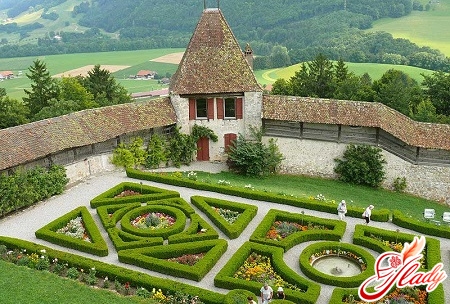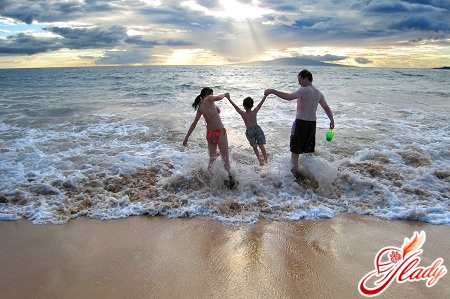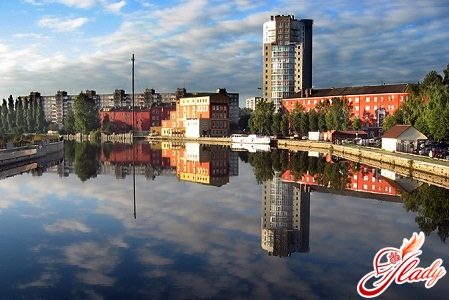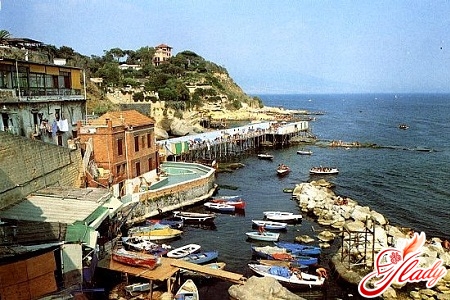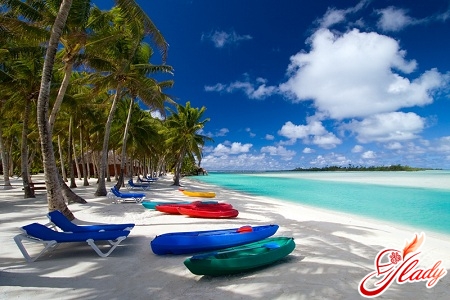 Lush tropical vegetation, transparentocean waters, comfortable, secluded and virtually untouched beaches. Under these indicators, excluding the last one, you can fit several hundred islands, which, as if specially designed by a great marketer for the advertising campaign of Bounty chocolate. And only fifteen islands in the Pacific Ocean really correspond to those epithets that are usually listed when talking about an analogue of paradise on earth - these are the Cook Islands.
Lush tropical vegetation, transparentocean waters, comfortable, secluded and virtually untouched beaches. Under these indicators, excluding the last one, you can fit several hundred islands, which, as if specially designed by a great marketer for the advertising campaign of Bounty chocolate. And only fifteen islands in the Pacific Ocean really correspond to those epithets that are usually listed when talking about an analogue of paradise on earth - these are the Cook Islands.
Geographic curiosity
If you dig into history and what is knownToday, about the great explorer James Cook, a certain historical and geographical curiosity will become noticeable to the naked eye. The fact is that these islands were first discovered not by James Cook, but by the navigators Alvarado de Mendaña and Pedro Fernandez Quiros, the Spaniards, back in 1595. Although found is a rough word. They sailed to the island of Pukapuka, looked around, gave it the name San Bernando and ... sailed on. For one hundred and fifty years, this part of the Pacific Ocean was kind of forgotten. Forgotten until 1773, when James Cook set off on his journey. But either the islands were so well camouflaged, or Cook was busy with something else, but he explored only part of the archipelago, four small islands, missing the largest one - Rarotonga. And if it were not for the mutiny on the ship "Bounty", this island would have remained unnoticed for a long time. Once again, we note that Rarotonga is the largest of the Cook Islands, and it has the right to take another name - Bounty, because the members of this ship were the first Europeans to leave their mark on the island. But the archipelago received its current name from the Russian explorer I. F. Kruzenshtern. At the beginning of the nineteenth century, he put the islands on the map and gave them a common name in memory of the "absent-minded" James Cook - the Cook Islands.
A few dry facts
To complete the picture, it is worth telling aboutgeographical location of the Cook Islands, population, political system, and to summarize, a few more dry facts about this truly magical place. The Cook Islands are located in the southern hemisphere, not far from New Zealand. And even their exact name sounds very respectable - a territory in free association with New Zealand. The head of state of the Cook Islands is the reigning monarch of Great Britain, currently Elizabeth II. All affairs are managed by the plenipotentiary appointed by her. By the way, he is also the only celebrity of the archipelago. And one more important fact: the Cook Islands have their own constitution, and the government can issue its own laws. And, despite the fact that the archipelago belongs to New Zealand, the New Zealand government has no right to influence or amend legislative acts. The archipelago is an independent territory. The official languages of the islands are English and Maori, but on each island, quite naturally, they speak their own dialect. The indigenous people of the Cook Islands are Maori. They came to these lands one and a half thousand years ago, but even before them, the Cook Islands were periodically visited by representatives of various ethnic groups. The main income of the inhabitants of the archipelago comes from the tourism business, which is quite natural. But there are also additional sources of income for the treasury: the export of pearls and exotic fruits, and since the islands were declared an offshore zone - also banking. The capital of the Cook Islands, Avarua, is comfortably located on the largest of the fifteen islands - Rarotonga. And as in any other capital of the world, the main commercial and administrative buildings are located here. Rarotonga is also home to the Cook Islands International Airport. Of course, it is inferior in size to large airports, but Boeings land quite safely on its runways. And it is precisely because Rarotonga has an airport that any trip to the Cook Islands begins with getting to know their capital.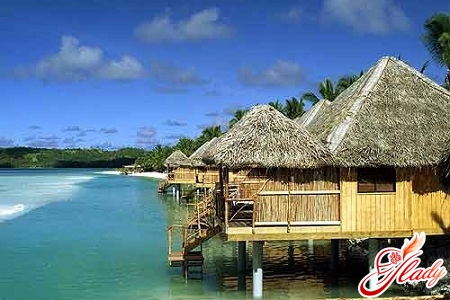
Rarotonga
Rarotonga is a very unusual island.Everything, from its shape to its flora, is amazing. From a bird's eye view, the island resembles an eye in the middle of the ocean. The fact is that Rarotonga is almost completely surrounded by coral reefs. The water around the perfectly oval island is light azure, and the island itself, like a curious pupil, "looks into the blue of the sky", either admiring its own beauty and the delicacy of colors, or admiring the color of the sky. Until recently, Avarua was more like a sleepy island backwater. But the development of tourist infrastructure led to an extraordinary revival, and now the city has become more consistent with its title. But despite everything, the influence of Polynesian culture prevails in the architecture of the island. This has allowed to preserve a harmonious, friendly and hospitable atmosphere in the capital. In the east of Avarua is the main shrine of the island - Seven in One Coconut Tree - coconut palms planted in a circle. According to legend, all the palm trees grew from a single seed as a sign from the gods who granted the lands of Rarotonga unprecedented fertility. Rarotonga, an island of volcanic origin, really does have more fertile soil than the coral islands, and citrus fruits, coconuts, pineapples and sweet potatoes grow here. It is worth remembering that the Cook Islands were once a field for the work of many missionaries. You can even admire the first missionary village in the western part of the island and the cemetery where Papeiha, the first preacher who brought the Word of God to the aborigines, is buried. The first Christian church of the islands is also located here. Its construction dates back to 1849. The open-air ethnographic museum is also located in the west of the capital. Here you can learn about the crafts, way of life, culture and cuisine of the islanders, discover a hundred ways to cook coconut and enjoy real Cook dances and songs. But not only the creations of human hands on Rarotonga are worthy of attention. The aborigines are very sensitive to natural resources. An excursion to Whitmore Falls invariably makes a vivid impression on tourists, and acquaintance with the island smoothly develops into a full-fledged vacation. You can bask on the beaches, hike to Mount Rua Manga and swim in the coral shallows. Just do not swim beyond the shallows, as further on the bottom sharply drops to a depth of three kilometers. So Rarotonga is a kind of oasis in the middle of the abyss.
Mangaia
The Cook Islands are not only a paradise for divers,lovers of natural beauty and hiking. It is also a speleologist's dream come true. At one time, the movement of tectonic Pacific plates led to the formation of the island of Mangaia on the surface of the ocean. The bizarre relief of limestone hills, which were first worked by the waters of the ocean, and then by winds and rains, is eaten away by caves. Inside, the caves are a phantasmagoria in stone. True, most of them are closed to visitors, since local residents chose them as a burial place for their fellow tribesmen. If you drive through the small villages of the island, you can buy folk crafts as souvenirs. Mangaia is the place where the most beautiful beads and necklaces are made from rain snails "pupu". Due to the laborious process of collecting snails, their scarcity and extraordinary beauty, in the past, shells were considered the equivalent of coins. Therefore, it becomes simply vital to have such unusual necklaces in your arsenal of jewelry.
Atiu
Atiu Island is the place where the legend oflove of Tangaora and Inatot. This is an island of exotic birds and a cave of fifteen halls. Any traveler who plans to go to the Cook Islands dreams of getting here. To begin with, the expression lush vegetation becomes clear on the island. On Atiu, literally every centimeter of land is occupied by exotic plants, and colorful birds have chosen the tree crowns for their nests. The word "silence" leaves your lexicon as soon as you set foot on Atiu. During the day, the air is filled with the singing of birds and insects, and at night with the rustle of the surf and the cries of night birds. In addition to natural treasures, Atiu has something that any interior designer dreams of. These are quilts "tivaevae". The fabric of such a blanket is woven from plant fibers, embroidered with threads of the same origin and painted with natural dyes that are obtained from the plants and minerals of the island.
Aitutaki
An island surrounded by the clear waters of a lagoonAituataki is a place where tales and stories are told in carved patterns. It's just that wood carving has become the main craft of the locals. The Cook Islands are famous for their wooden decorations all over the world. In the town of Arutanga, you won't find two identical houses. Each owner tries to decorate his home with carved decorations to the best of his talent and aesthetic taste. The church in Arutanga, the oldest and most beautiful, is also decorated with carvings.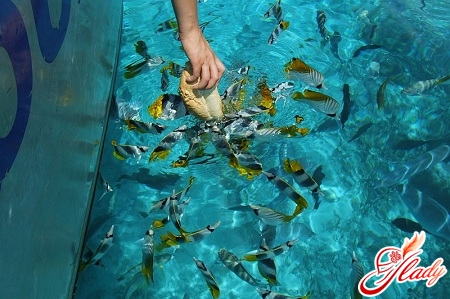
Manuae, Takutea, Suvorov and Nassau
These four islands, despite the fact that theyare far from each other, somewhat similar. Let's start with the fact that calling them large would be a huge exaggeration. Manuae and Te-Au-O-Tu are part of the same atoll. It is impossible to live here, since the entire territory of the atoll is a marine reserve. In the spring, when turtles lay eggs in the coastal sand, excursions - and those become impossible. Nassau, of course, can be chosen for recreation, but only for those who love solitude. No joke, the entire population of the island is only seventy-five people. Even a boat from Pukapuka appears here once every two or three days. And on Suvorov Island there is the only national park. So everything here is under state protection. And pay attention, the locals pronounce the name of the island - Suwarrow. The name familiar to us was given to the island by the navigator Kruzenshtern, who visited the Cook Islands, but for the Maori it is too difficult to pronounce, and they changed the name in their own way. Takutea Island, like Suwarrow and Manuae Atoll, is uninhabited. Here you can truly feel completely cut off from civilization.
Manihiki, Rakahanga and the atoll of Tongarev
A visit to these three islands will be a mustfor any girl. In addition to natural beauty, there are pearl farms here. Mother-of-pearl shells contain pearls of all shades of the night. And what could be more beautiful than real black pearls! You can take an excursion to the underwater farm only with the permission of the chief and accompanied by a local employee. And after the underwater excursion, you can buy a tiara of black pearls made by local craftsmen. Black pearls are used in most traditional jewelry on these islands.
Mauke, Mitiaro, Pukapuka
These three islands can be called the cradleculture and a repository of traditions of local residents. Just imagine, the way of life and living conditions that existed before the arrival of Europeans on the islands of the archipelago have been preserved here! And this is not done to please tourists, as it might seem at first glance, but at the behest of the soul. The influence of tourists on the lives of the natives here is reduced to a minimum. True, no one forbids you to relax here. Relax and enjoy, but not to the detriment of the local population.
Palmerston
Palmerston Atoll was named so by Cook himself in honor ofPrime Minister of England, a prominent politician and patron of science and art. There is a very interesting story connected with this island. The ship's carpenter William Masters arrived on Palmerston together with his Polynesian wives. He received permission to become a bigamist personally from the British government, and it was not limited to two wives; a little later he married for the third time. This polygamist was also the sole ruler of the island until his death, and left behind seventeen children. And in 1954, Palmerston was transferred free of charge to the numerous Masters family. Descendants of three branches of this family live on the island to this day, and marriages within each branch are prohibited. The Cook Islands, despite their remoteness from the mainland, are a very interesting and unique place. Here you can find everything a spoiled traveler could want. But their main advantage is that these places are almost unspoiled by mass raids of tourists. Just you, the ocean and the endless expanses of the sky We recommend reading:




